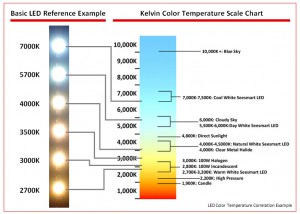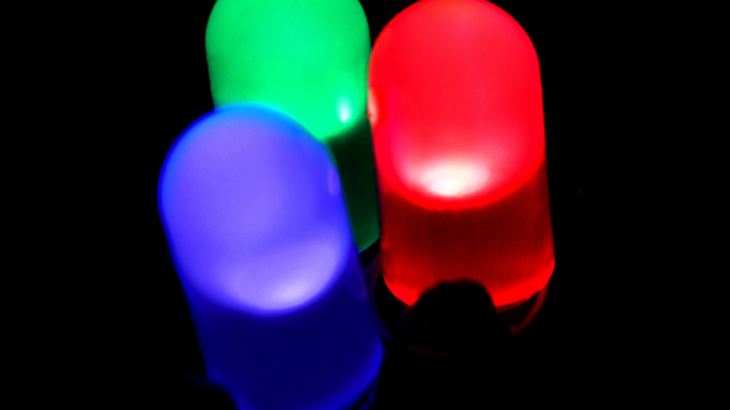LEDs are more than just a great energy saving solution for your home or business, they also are being used as anti-aging and anti-acne treatments, as hair loss prevention, and as a better solution to horticulture production.
Color Temperature
One of the elements of LEDs are their ability to be set at different color temperatures. Simply put, an LED set at different Kelvin temperatures allows an LED light to emit different colors. The first and obvious benefit of having various color options is to change how people perceive and feel different environments. For instance, a temperature of 2,500K would emit a yellow light, creating a warm, comfortable feeling. Meanwhile, a Kelvin temperature of 9,000K would emit a blue light, causing a cool, professional feeling. These techniques are by many restaurants, law offices, dental offices, hospitals, schools, and more. However, recent studies have shown that LEDs do more than just change our mood.

Source: SEE Smart LED
Skin and Hair Treatment
According to Dr. Stefan Düve, a German dermatologist, “red and yellow light activates cell growth and stimulates the formation of collagens. It destroys the stable water film which encloses the elastic fibers of the (aging) skin, causing them to go stiff. The fibers gains [sic] back their original flexibility, while the surface of the skin is smoothed and wrinkles disappear.” Regular treatment for at least three weeks show improvements in wrinkle reduction. Studies on 76 patients have shown this type of treatment to be very effective, reducing facial wrinkles by up to 36%.
In addition, LEDs have even been used an as effective hair loss treatment. A combination of LED irradiation and infrared light, a duo that helps stimulate cells on the scalp, has shown to stop hair loss and help hair growth. On the other end of the color spectrum, blue LED lighting has been shown to cure acne, slow down acne inflammation, and treat pain and muscular tension.
Source: Biz LED
Muscle Pain Treatment
A lot of research and development has been conducted on blue LED technology. One such benefit of this technology is muscle pain treatment. Blue LED lighting can help stimulate the body’s own natural nitric oxide (NO). According to Philips, a leader in blue light technology, “NO increases local blood flow which supports the body’s natural recovery process, enhancing nutrient and oxygen supply as well as metabolite removal.” Essentially, it relaxes muscles through improved blood circulation, reducing pain.
Source: Philips.com
Horticulture Benefits
The power of LED color rendering also seems to have a rejuvenating effect on more than just humans. According to a Philips case study, deep red, white, and far red LED lighting helps different horticulturists produce stronger, healthier crops. Maatschap Kreuk, a tulip grower in the Netherlands, uses a combination of deep red/white. The combination was proven to produce excellent growth for the tulips, and the white light increased employee visibility. “It clearly has a positive effect on the crop,” explains Kreuk, “the tulips have a deeper color green and greater elongation.” Kruek further states, “The operating costs per square meter are lower because LEDs have a much longer lifespan than a fluorescent solution.”
In Belgium, Alain Lutz, a strawberry grower, uses deep red, white, and far red LED lighting on his strawberries, which has proven to “. . . ensure good stem elongation . . . and even makes it possible to achieve a higher yield of early strawberries with a low percentage of malformed fruit.”
Source: Philips Case Study
Final Thoughts
LED lighting has revolutionized the way people do business. Over the past ten years—around the time LEDs have become increasingly popular—scientists have found amazing power properties of LED lighting, from brighter lighting, energy savings, and rejuvenating effects on human skin and plant growth. The LED is honestly only in its infancy stage of research and development. We’re looking forward to seeing what powers are still undiscovered.




